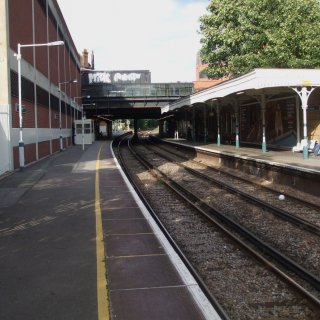CRL lead the way in carbon fibre composite strengthening
Many old, and sometimes new, concrete, steel, timber, or cast-iron structures, for various reasons include elements that no longer provide sufficient load-bearing capacity and therefore require some form of strengthening. This could be because of a change of use, increase in loading, corroding, or damaged reinforcement, deterioration, alteration, or long-term fatigue. There are various methods that can be used to strengthen structures and buildings, but the most common are composite strengthening using Carbon Fibre Reinforced Polymer (CFRP) composites, and High Perfprmance Concrete (HPC) & Ultra High Performance Fibre Reinforced Concrete (UHPFRC).
CFRP composites are a combination of fibres (carbon, or aramid) and polymer based resin (epoxy) which transfers the stress between the fibres and protects them. Other fibres and resins can be used such as aramid and glass fibres and polyester resins. This combination of materials forms a structural composite which is both lightweight and durable. Compared to steel plates the equivalent carbon fibre plates are 15% of the cross sectional area and 3% of the dead load. CFRP composites provide sustainable engineering solutions and have been successfully used in many industries for over 60 years.
There are two methods for composite strengthening;
-
- Carbon fibre plate bonding where the composite plates, which are usually carbon fibre reinforced, are manufactured off site, and then bonded to the structure using epoxy adhesives, and
- FRP wrap where the dry fibre fabric is either rolled into the wet resin on the structures surface (dry lay) or the resin is applied to the fibre fabric which is then applied to the structure (wet lay).
Understandably quality control is easier with plates manufactured off site but for strengthening around beams and columns the wrap system is the only solution. In both cases there are strict quality control procedures to follow. CRL is qualified to design and install using both techniques and are approved by the leading material suppliers.
CRL started researching the use of carbon fibre composites in 1992 when we commissioned Sheffield University to carry out some initial trials strengthening reinforced concrete beams. In 1996 we were the first company to complete a commercial structural strengthening contract using CFRP composites.
Since 1996 we have designed and installed numerous CFRP composite strengthening schemes for reinforced concrete, steel and cast iron. CRL pioneered the use of ultra-high modulus plates to strengthen cast iron beams for Network Rail and London Underground (TfL).
Over the last 20 years CRL have played a key role in developing the technique by supporting further research and development on this subject with UK Universities. We have also assisted with the development of standards and guidance documents for the design, installation and management of composite systems published by the Concrete Society as Technical Reports 55 & 57.
CRL provide the construction industry with a design and installation service for FRP composite strengthening using both pultruded & UHM plates and wrap systems utilising innovative strengthening techniques and materials which comply with current Eurocodes.
Our largest project has been the installation of 15 KM of CFRP plates to strengthen floors in an office building. Recently we have started to develop the use of FRP composites for new bridge structures and replacement decks. These are lightweight, manufactured off site, quick to install and durable. A sustainable solution for the modern construction industry.
HPC and UHPFRC are characterised by a compressive strength of 60–120MPa for HPC and 120–200MPa for UHPFRC. The inclusion of fibres with carefully selected fines and aggregates allows the HPC to offer superior performance properties such as durability, tensile ductility, toughness, hardness, impermeability, wear resistance, impact resistance, chemical resistance and resistance to repeated cycles of freezing and thawing.
HPC was first develpoed in 1978 in Denmark by Hans Henrik Bache, who was able to carefully select densified system particles containing homogeneously arranged ultrafine particles to produce HPC. It is only recently, however, that concrete professionals have started using HPC and UHPFRC in thin layers to repair and strengthen columns, beams, slabs and bridge decks.
Read about the use of high performance concrete for the strengthening and upgrading of structures:
Related Projects

“Without doubt, CRL leads the FRP-strengthening industry in the UK. CRL’s extraordinary expertise and attention to detail place them apart from other companies in this field.”
JProf. Tim Ibell | Associate Dean for Research | University of Bath









